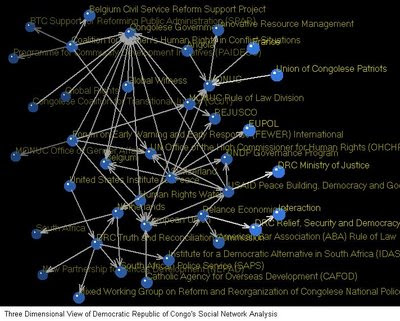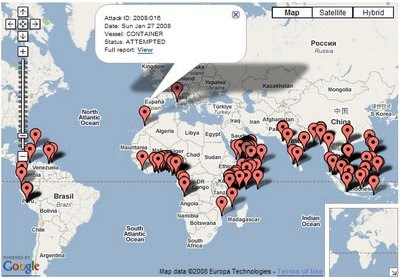The Speaker
As I mentioned in the last post, finding someone who could speak intelligently yet engagingly on the subject of the economics of virtual worlds was surprisingly easy -- for me. I had, serendipitously, met Lenny Raymond while in California last summer and he was the perfect person for the task.
Lenny is the starter, strategist and fixer for V0lv0x Associates, a "band of experienced high tech marketing, engineering, strategy, and management professionals" based, of course, in San Francisco. Lenny's bio is pretty impressive:
- "Mr. Raymond was previously Entrepreneur in Residence at Alsop Louie Partners, an early stage venture capital firm, where he helped start what is going to be the next big high tech toy company. "
- "Previously Lenny was co-founder & COO of FingerTwitch, Inc., the leading provider of deployment technology and services for mobile game publishers & developers; FingerTwitch was acquired by Hands-On Mobile, Inc., the world’s largest mobile application publisher, one year after its inception. "
- "Before FingerTwitch, Mr. Raymond was founding CEO of Xigo, Inc., a venture-funded provider of real-time unstructured data analytical software and services for the brokerage industry. "
- "Earlier in his career, Mr. Raymond was general manager of Wizards of the Coast (Hasbro)’s online and electronic media business unit. "
- "Lenny has also worked at Mercer Management Consulting, in Apple’s Advanced Product Group, and in global corporate finance at Citibank."
- "Mr. Raymond’s education includes a BA in Economics from the University of Pennsylvania and an M.B.A. from The Wharton School."
The Setting
Getting an excellent speaker on an interesting topic wasn't difficult enough, though. We needed to make it more complicated. Our budget ($0) did not permit us to fly Lenny from SF to Erie so we decided to hold the lecture about virtual worlds IN a virtual world.
This is not the first time this has happened, obviously (there are lectures and presentations in Second Life all the time, for example), but it was the first time we had done it and none of us were exactly sure how to proceed.
First, we decided to hold the lecture in the online game, World Of Warcraft (WoW). We were all more familiar with WoW than with Second Life and we all knew that the economy is a vibrant and integral part of WoW (potentially, we thought, providing Lenny with the opportunity to make some of his points directly. Boy, were we right about that...).
WoW also has very good in-game communications. There is a text chat function with multiple channels (including private and semi-private channels) and the possibility of in-game voice chat as well. All of us (including Lenny) had experience with these communications modes but none of us had ever tried to pull off a lecture in WoW before. A couple of students volunteered to figure out the details and, before I knew it, we had formed a "Guild" and had developed a comms plan (Thanks Henry, Devin, Kirk and all the other Initiative members who helped make it happen!).
- Note: For the national security types who are concerned about the implications of these robust communications capabilities, it should be comforting to know that Blizzard, who makes WoW, has the ability to monitor all of these methods of communication.

Some Guilds have 100's of members or have been in existence since the game began. In certain circles, getting into the "right" guild is seen as a good career move and WoW has been called "the new golf" by some (though others would clearly dispute this).
For our purposes, forming a Guild gave us two advantages. The first was Guild Chat (a private means of communication among Guild members) and the second was the potential to access the Guild "Bank", clearly part of the economic infrastructure of the game.
We also decided that we wanted non-players to be able to view the lecture as well. To do this, we loaded up the game on one of the computers in one of our classrooms and broadcast it on the big screen through a projector. In the end, about half of the 25 person audience was in the game and the other half was in the classroom watching the action and listening through speakers.
We had the inevitable technical difficulties -- Blizzard, which makes WoW, had released a massive update/patch to the system a few days before the event -- but things worked out well. Lenny gave an excellent presentation (more on that in the New Year...) and we all learned something from both constructing and particpating in the experience.
As a side note (for the educators in the audience), I was and continue to be very impressed with the learning potential of virtual worlds and WoW in particular. It is a fully realized virtual world, massive in its geographic size and scope. It is a stable, almost always available platform with a wide variety of useful communication/coordination/collaboration tools. You cannot do anything you want, but the variety of things you CAN do gives the world a number of possibilities for interactive learning.
Yes, yes, I know it is a "game" and its intent is to provide entertainment (and make money for Blizzard), not to serve as a platform for a learning experience. It has the tools necessary, however, for a creative educator to take advantage of the high interest, immersive environment the game provides. Whether we build these experiences in games like WoW or simply use the lessons learned from these type of games in the next generation of curricula, my initial impression is that there is something here worth exploring further.
After New Years: Lecture Notes!













